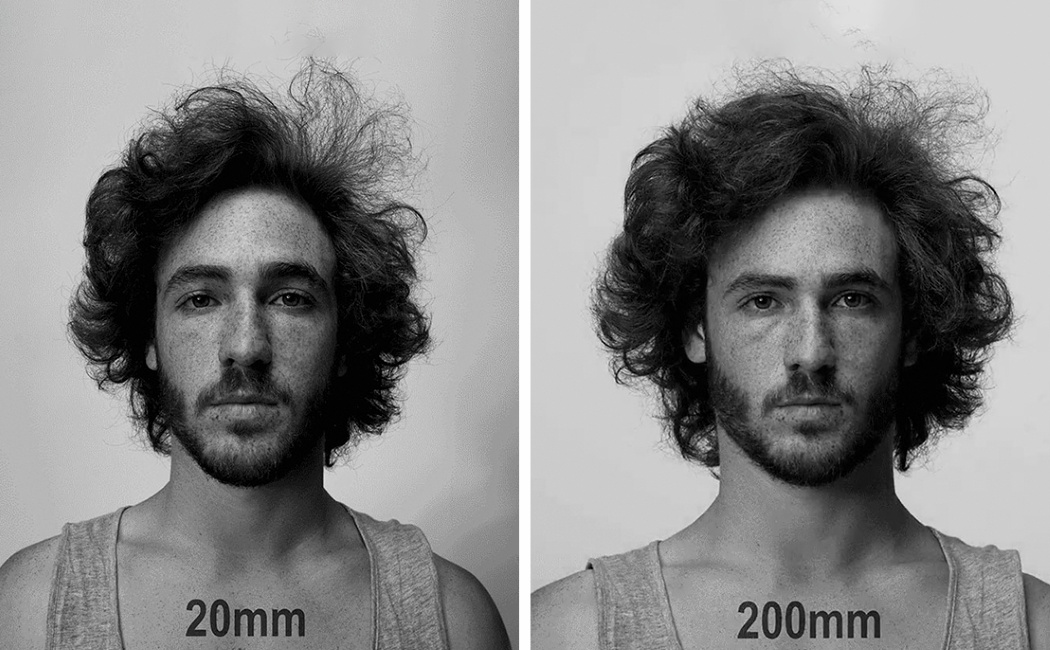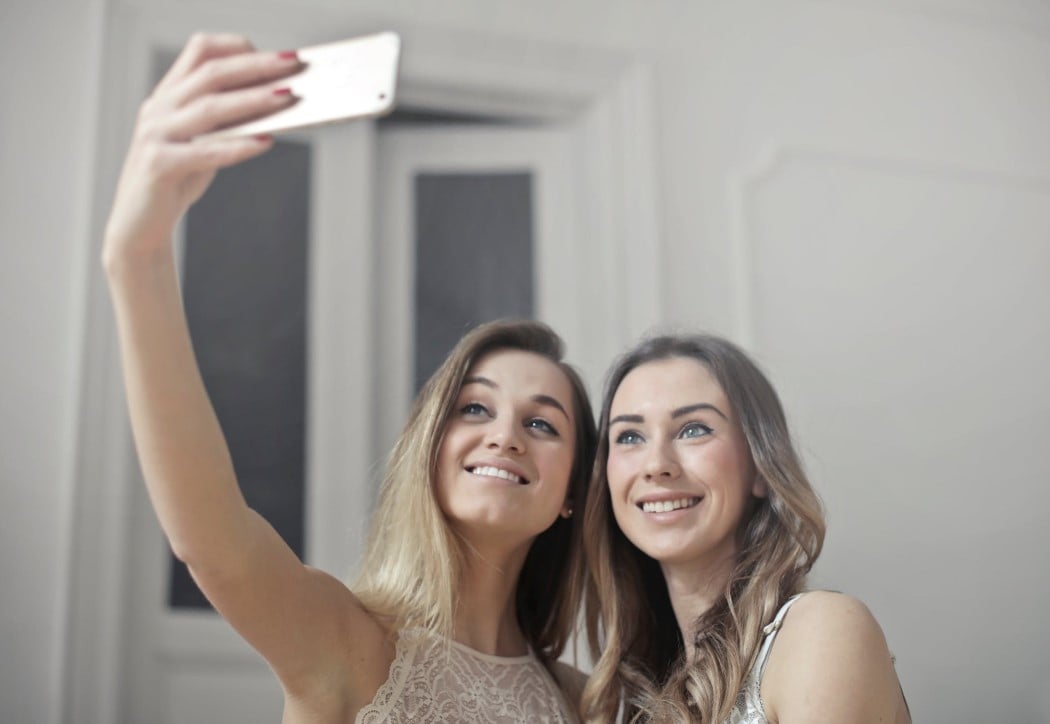
There’s a strong chance that you may have come across the gif above somewhere on the internet. Or the image below. This, is the handiwork of something called Focal Lengths. It determines, very basically, how narrow or wide your lens’s field of vision is.

Camera lenses come in various types, but the two focal lengths we’re going to really address are the wide angle and the telephoto. Wide angle lenses have lower focal lengths, and basically capture a wider range of imagery, with everything in focus. Telephoto lenses, on the other hand, are responsible for taking longer shots, focusing on a much smaller area, and distinctly blurring the background keeping a subject in focus. In short, a wide angle lens is perfect for landscapes, allowing you to cram more into a single picture, whereas a telephoto lens is ideal for subject portraits, making it great for animals/subjects that are far away, or for faces, because of the way they focus on them. So what’s all this got to do with nose jobs, you ask? Well, let’s dig deeper.
You’re with a bunch of friends at a get-together, clicking pictures. You use your primary camera to capture everything from the food you eat, to a candid photo of your friends, to the sunset. All these objects are at varying distances, and your phone camera works to capture each photo and make it look good. Your food photos have a spectacular portrait-style blur, while the sunset photo is crisp and clear. The fact that your phone has two lenses on the back only makes it easier for your phone to multi-task. However, the front-facing selfie camera is a different story. There’s usually always a fixed distance between the camera and the subject… the length of your arm. The front-facing camera is almost always used for selfies, which means the distance between the camera and the subject (your face) is usually a fixed parameter, i.e., the length of your arm. The natural choice for capturing portrait pictures would be to put a telephoto lens on the front, above the screen, so you get remarkable portrait shots… but the problem there is the fact that A. telephoto lenses require subjects to be quite far away from the camera, and B. Human arms aren’t long enough.

This makes the wide-angle lens the only feasible option for the front-facing camera. It captures things in focus, and it captures a wider field of view, which means your selfies have more imagery in them, making for wonderful group selfies… but there’s a caveat. Fitting more imagery into a fixed viewing area can only mean one thing. Distortion.
Think of how a fish-eye lens works versus a telescope. Both show images within a circular area, but a fisheye lens fits in a lot more within that circle, distorting elements as a result. That’s an exaggerated but pretty accurate version of what happens when you click selfies too. The wide angle lens on your phone (coupled with how short human arms are) results in faces getting distorted, and noses looking a few sizes bigger than they already are. This distortion is enough for people to perceive themselves differently and studies show that as many as 55% of people getting nose-jobs in 2017 were concerned because their noses looked bulbous in selfies… and that’s pretty concerning.
A video below by the people at Vox talks about the phenomenon and the how, demonstrating that the further the camera is from you, the lesser distortion… which means the best bet you have right now is to either outstretch your arm or pick up a selfie stick. The difference of as little as a few feet can be pretty remarkable. What’s more is the fact that scientists are even working on an AI-based technology that can edit/correct your pictures to make your faces look less distorted… which is pretty neat considering we’ve done so much to make orur photos look great, from red-eye removal, to skin-softening algorithms, to artificial portrait modes where a machine literally analyzes and differentiates between foreground and background and blurs the latter out. Could distortion-correction be the next feature to drive smartphone sales up and nose-jobs down? Well, only time can tell. Until then, you’ll just have to make do with that selfie stick!
from Yanko Design http://bit.ly/2MUsEAv
via IFTTT